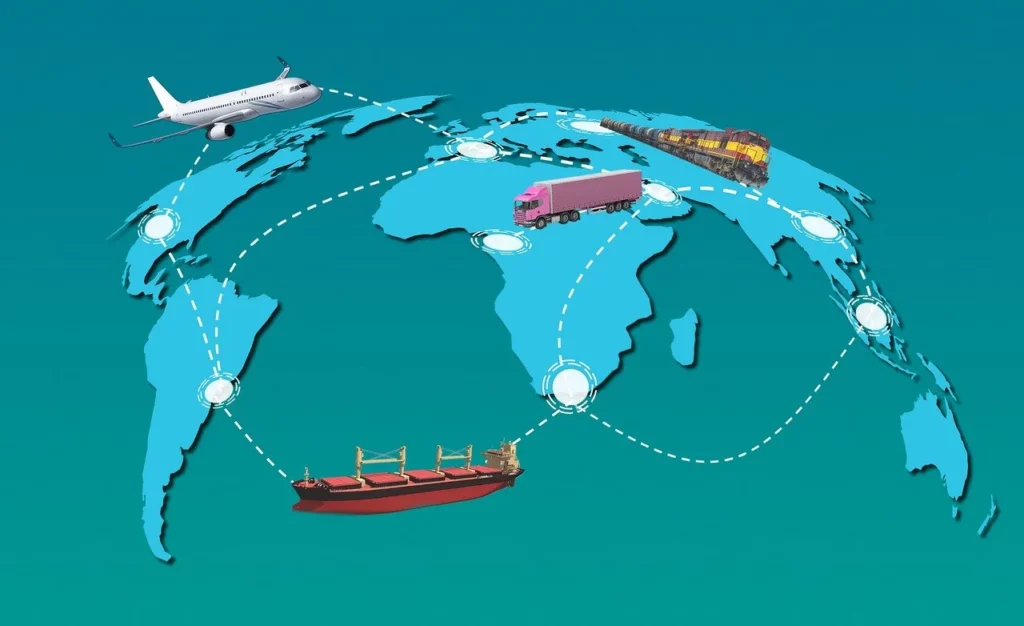In many facets of business, risk management is becoming more and more crucial, and logistics operations are no different. To guarantee that goods are delivered promptly, safely, and with the required quality, risk management in logistics operations is crucial.
Many businesses, however, are unaware of the specifics of risk management in the logistics chain and how to properly execute it.
We’ll discuss why it’s critical to the success of many businesses in this article.
Read also: Unlock Success: 3 Expert Tips to Skyrocket Your Inventory Turnover Rate
What is risk management in logistics?
A deliberate approach to detecting, assessing, and reducing risks that could have an impact on the effectiveness and safety of logistics operations is known as risk management in the industry.
At various phases of the process, from production and storage (inbound logistics) to transportation and delivery of the finished product (outbound logistics), risks might develop in the logistics chain.
Therefore, identifying and analyzing potential risks, putting preventative measures into place, and developing a backup plan to handle unforeseen issues are all part of risk management in logistics operations.
What are the operational risks in the logistics system?
The logistics system is susceptible to a number of operational risks, some of which include:
- Delays in deliveries: deliveries that are delayed can cost money and decrease customer satisfaction.
- Damages to goods: during the transportation of cargo or during transit, issues with packaging, poor storage, and improper handling can result in damage to products.
- Cargo theft: companies that ship expensive goods are constantly worried about cargo theft.
- Communication failures: delays and mistakes can be brought on by breakdowns in communication among the parties involved in the logistics chain.
In addition to the operational risks already mentioned, logistics operations can also pose significant threats to the workers’ occupational safety.
Work safety risks in the logistics system
Transporting freight can be risky, especially if proper safety precautions are not used.
The following are some of the major dangers to workplace safety in logistics operations:
Work accidents: moving large or unsuitable loads can result in serious mishaps, including being driven over by forklifts, crashes, loads tilting over, falling objects, and other situations that endanger the company and the workers’ occupational health.
Repetitive strain injuries (RSI): musculoskeletal injuries such as RSI can occur as a result of repeated load manipulation. Repetitive activities overload the joints and muscles, resulting in these injuries.
Inadequate working conditions: employees in the logistics industry frequently work in challenging circumstances, such as cold or confined areas. The health and safety of the workforce may be impacted by these circumstances.
The risk management sector must collaborate with other areas like quality, job safety, and information technology to ensure a safe and effective work environment and reduce risks in logistics operations.
Ways to minimize risks in logistics operations
Our industry experts have outlined some of the key strategies for reducing risks in logistics operations in order to directly contribute to the logistical success of your business.
We are aware that one of the core responsibilities of the risk management field is to reduce risks in logistics operations.
Implement security procedures
Minimizing risks in logistics operations can be accomplished by implementing clear and effective procedures. The protocols need to include everything, such as preventive equipment maintenance, from employee work safety to cargo safety.
Invest in training
A key component of lowering risks in logistics operations is employee training. Therefore, it is crucial that the business invests in both workplace safety training and specialized training for the duties that employees undertake.
Use technology
Technology may be a valuable resource and a wonderful ally in risk control in logistics operations. By using monitoring technologies, for instance, activities and cargo movements may be watched in real-time, and the items’ integrity is protected throughout the transportation process.
Load monitoring systems can record shocks, vibrations, and transport circumstances that result in any kind of damage to the structure or equipment, whether in use, in transit, or in storage, in addition to spotting potential flaws and issues in operation.
In the same way, technology aids logistics experts in creating safer routes due to the dangerous state of the roads or the carelessness of the driver.
Service outsourcing
An intriguing solution to reducing risks in logistics operations is outsourcing services. By working with a specialized company, the organization can rely on qualified personnel and the right tools to complete the duties.
Not confined to the transportation phase. The broad field of logistics includes everything from product procurement through delivery to the final consumer.
Businesses that specialize in particular phases can add a lot to projects by drawing on their experience.
Constant evaluation
To discover potential hazards and chances for improvement, operations must be continually evaluated. The risk management sector must continuously pay attention and monitor operations to spot potential faults and suggest workable fixes.
By implementing these steps, the risk management sector may greatly help to reduce risks in logistics operations, ensuring both the integrity of the cargo and the safety of the workers.
It is crucial that your business implements preventive steps to lower the risks associated with cargo movements or damage to transported items.
Count on 3PL Links Inc. to accomplish this. We are a business that offers value to the logistics industry by providing creative ideas and specialist consulting to improve transit efficiency, quality, and safety.
Learn about our solutions and how they may help your operation become more productive and safe. Contact us now.

















